What Is Coral Reef Bleaching?
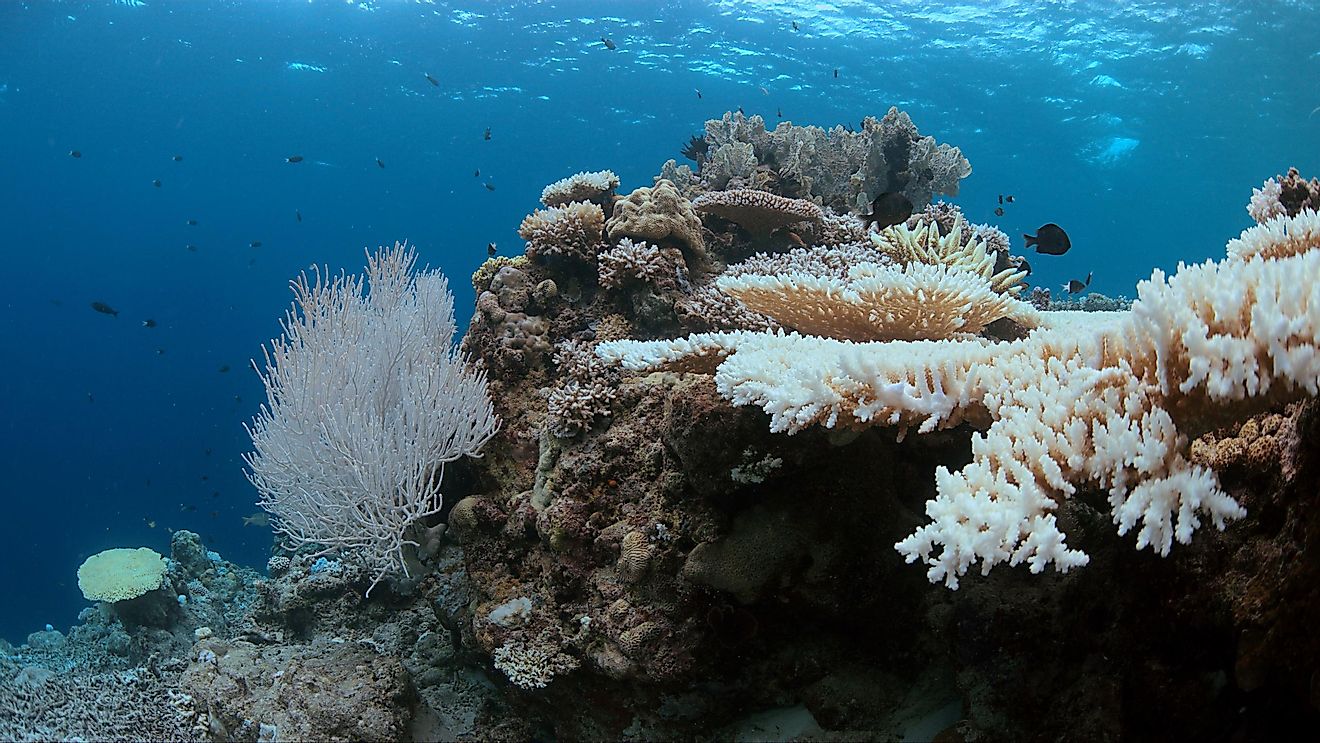
- Coral bleaching is the most visible, rapid and destructive impact of human-caused climate change on coral reef ecosystems.
- Elevated ocean temperatures leads to the expulsion of the symbiotic zooxanthellae from the coral tissues, resulting in bleaching and death of corals.
- It has been estimated by various studies that about half of the world's coral reefs have been lost due to coral bleaching over the last three decades.
Occupying less than 0.1% of the world’s ocean area, coral reefs are home to a quarter of all marine species and are also extremely beneficial to humans in terms of the varied ecosystem goods and services they provide. However, coral reefs are under extreme stress from human activities that have led to increased greenhouse gas emissions, ocean warming and acidification. These changes in the environmental conditions have resulted in the bleaching and subsequent death of the coral reefs.
Content:
- What Is Coral Bleaching?
- Causes Of Coral Bleaching
- Rise In Sea Temperature
- Ocean Acidification
- Overexposure To Harmful Solar And Ultraviolet Radiations
- Chemical Pollution
- Increased Sedimentation
- Human Activities
- Consequences Of Coral Bleaching
What Is Coral Bleaching?
Corals form a close association with microscopic single-celled photosynthetic algae that reside inside coral polyps, called zooxanthellae. The zooxanthellae provide oxygen for photosynthesis as well as nutrients (sugars and amino acids) for their cnidarian host. Coral reefs also exhibit a variety of bright and vibrant colors due to the presence of these organisms. The corals in turn supply the algae with crucial inorganic compounds, besides providing a safe habitat and shelter.
However, when the corals face stress due to changes in the environmental conditions, this mutualistic symbiosis between the zooxanthellae and their coral host is disrupted. This results in the expulsion of the zooxanthellae, and the eventual loss of photosynthetic algal pigments due to this leads to the whitening of the coral tissues and exposure of their white calcium carbonate exoskeleton. This entire phenomenon is referred to as “coral bleaching.”
Causes Of Coral Bleaching
Some of the main causes of coral bleaching are listed below:
Rise In Sea Temperature
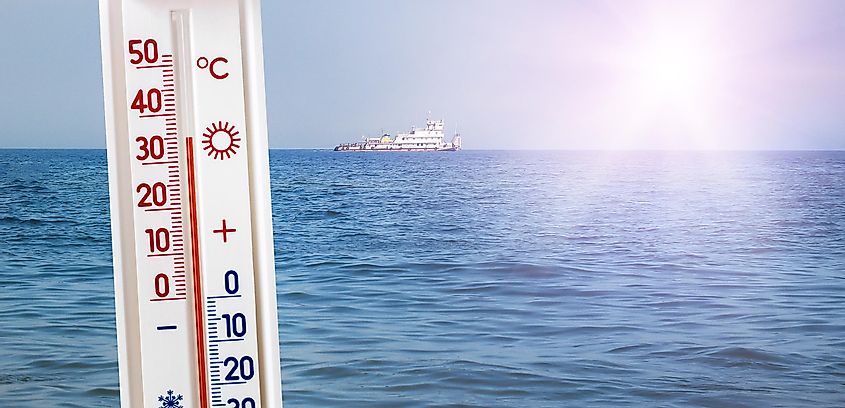
The leading environmental factor that triggers coral bleaching is the elevated surface temperature across ocean waters, caused due to human-caused climate change. The microscopic zooxanthellae residing inside the coral polyps are sensitive to higher temperatures. Therefore, a slight increase in the ocean temperature results in the expulsion of the zooxanthellae by the corals, leading to the subsequent loss of color and prevention of photosynthesis. As a result, corals also become vulnerable to starvation and more susceptible to diseases. When these bleached corals are exposed to warmer ocean waters for eight weeks or more, the coral polyps will eventually die and turn the reef into a barren substrate.
Severe mass bleaching and mortality of the tropical coral reefs have also been reported, due to the elevation of sea temperatures for longer periods, that have been caused by the El Niño events. It has been estimated that the optimal water temperature facilitating coral growth is around 20-28°C. However, if the water temperature becomes lower than 18°C or increases above 30°C, most of the corals will be bleached.
Ocean Acidification
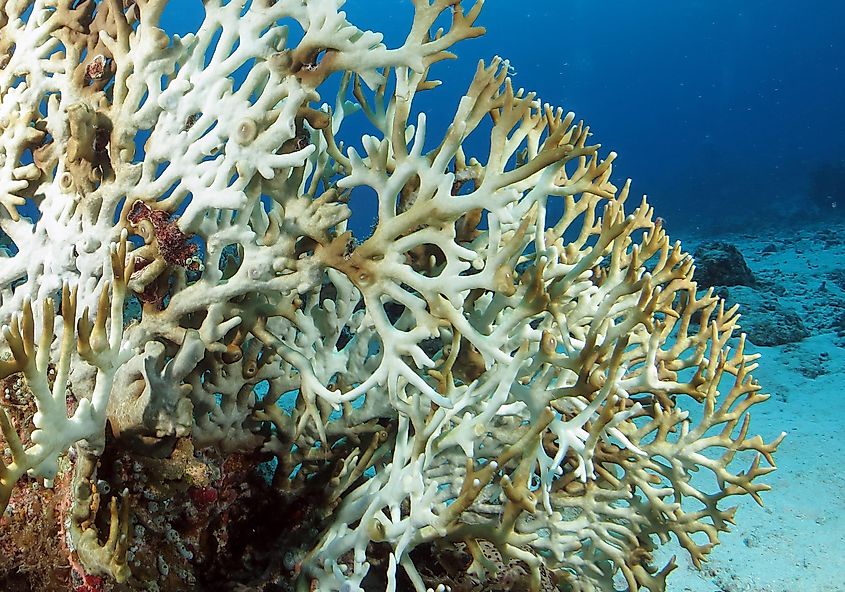
The oceans act as a massive carbon sink by dissolving the atmospheric carbon-dioxide in their waters. An increase in the carbon-dioxide levels due to excessive burning of fossil fuels has led to the ocean waters becoming increasingly acidic, a process referred to as ocean acidification. This in turn lowers the pH of water, subsequently affecting the coral reefs around the world. The carbonic acid formed as a result of this acidification process inhibits the ability of the corals to create calcareous skeletons, leading to the breakdown of the reef framework.
Overexposure To Harmful Solar And Ultraviolet Radiations
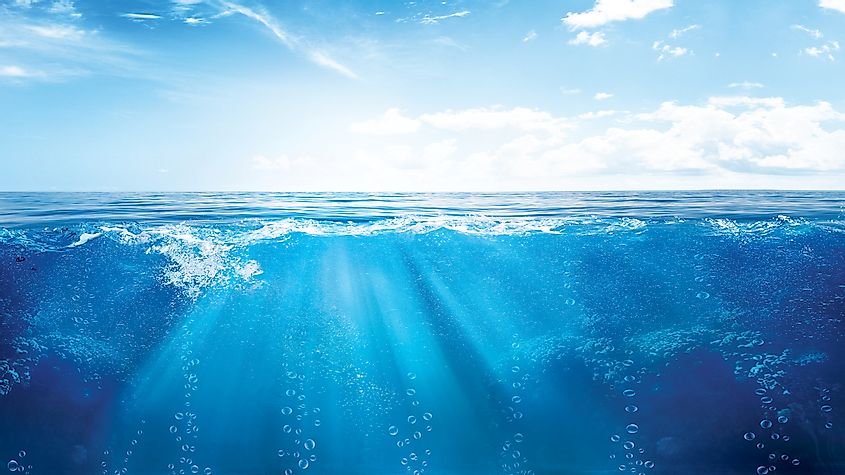
The changes in tropical weather patterns have resulted in less cloud cover and more solar irradiance, which have further induced coral bleaching.
Chemical Pollution
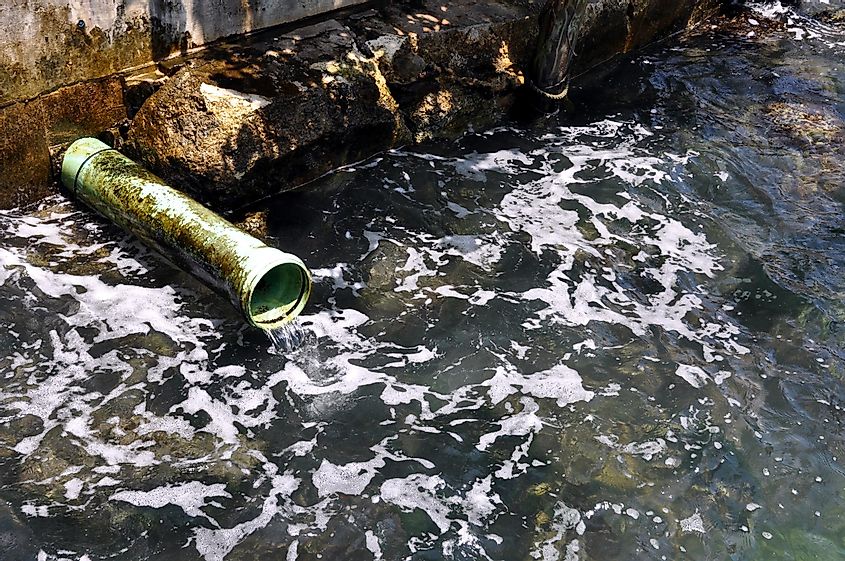
Water pollution also leads to the massive destruction of coral reefs. Sources of water pollution include runoffs from agricultural pesticides and fertilizers, oil spills, industrial pollutants, and discharge of untreated sewage. This increased concentration of nitrogen-rich fertilizers, animal wastes, and human sewage affects corals by promoting phytoplankton growth and supports a huge number of organisms that compete with the corals for space.
Increased Sedimentation
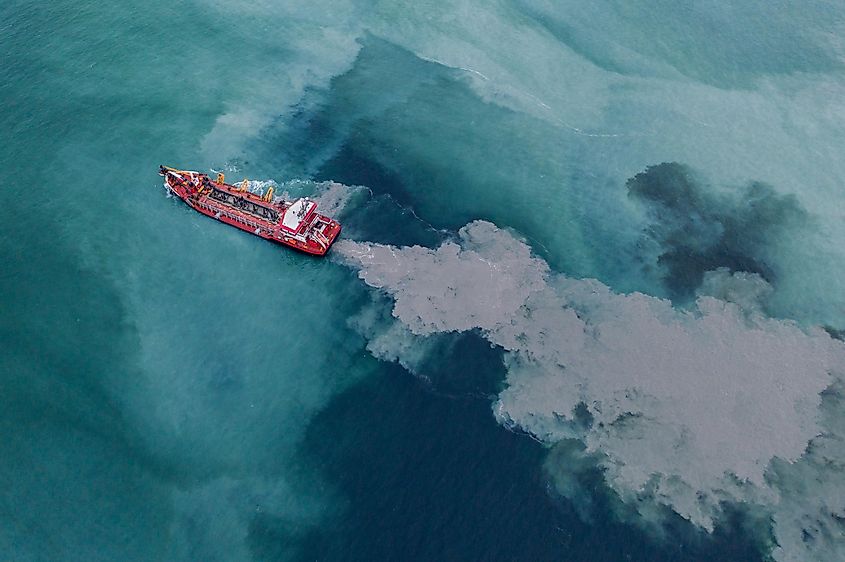
Land runoffs and coastal constructions have resulted in high rates of erosion and subsequent deposition of the suspended particles in the ocean waters. This has resulted in the smothering of corals and an increase in water opacity, potentially reducing coral photosynthesis and growth.
Human Activities
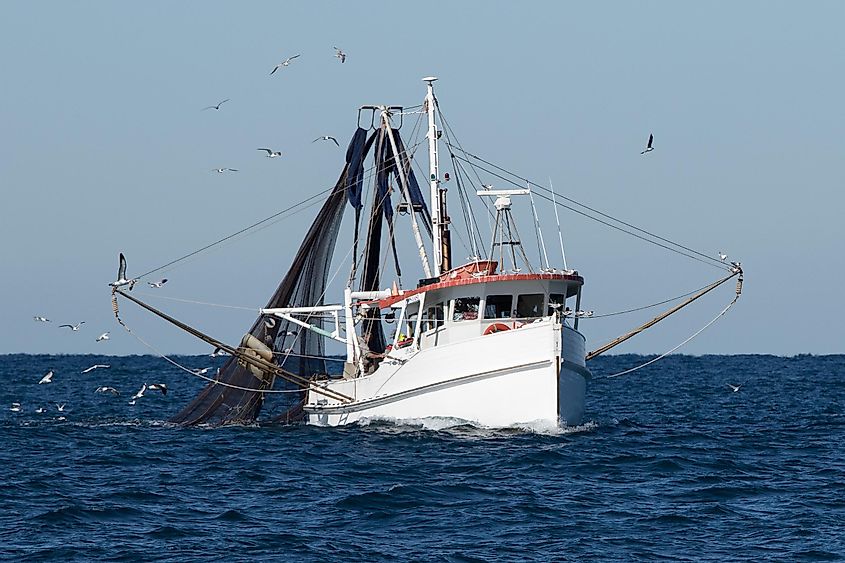
Destructive fishing practices like cyanide fishing, blast fishing, and overfishing using trawlers have destructive effects on a huge number of coral reefs. Besides this, coral mining and industrial developments near coral ecosystems have also adversely affected coral reefs.
Consequences Of Coral Bleaching
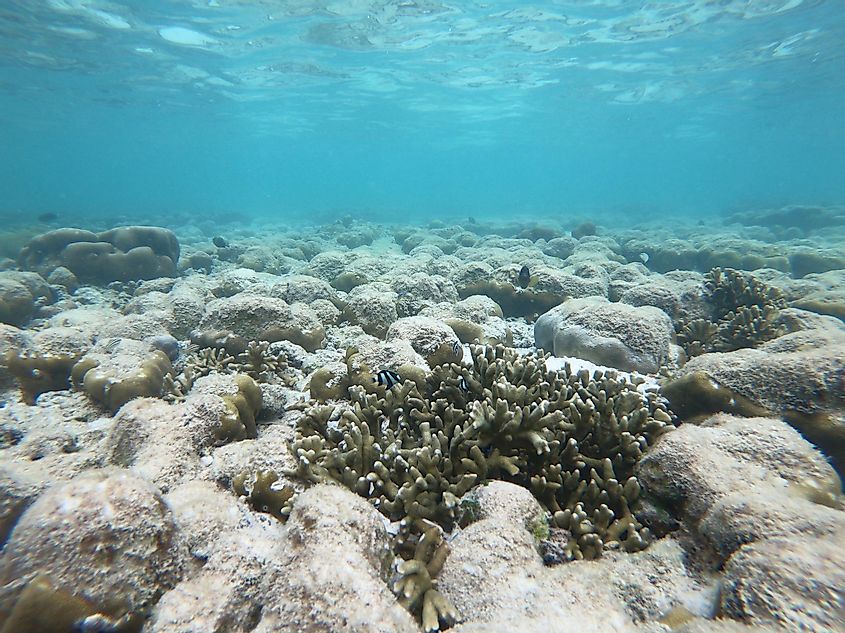
As per various studies conducted by scientists and researchers, it has been estimated that about half of the world’s coral reefs have been lost due to coral bleaching over the last three decades. The changes in the coral reef communities have severely affected not only the oceans and marine life but also the food security and livelihood for over half a billion people worldwide. Coral bleaching also leads to the decline in genetic and species diversity and large shifts in the fish communities. This in turn has a massive impact on the fish species that are associated with the reef. Bleached and degraded coral reefs also severely impact tourism, thus affecting the local economy. Mild bleaching affects the ability of corals to spawn, hence slowing down their recovery from such impacts. It takes several decades for coral reefs to fully recover from the bleaching impacts. Therefore, it is vital to ensure that such events do not occur frequently.
The Great Barrier Reef has been severely damaged by coral bleaching about four times in the past 20 years. Due to consecutive bleaching events in 2016 and 2017, it has been observed that almost 50% of the reef has been destroyed. With global warming continuing to heat the planet unabatedly, coral bleaching is expected to become more frequent and more severe. According to a recent study, if strict measures to control greenhouse gas emissions are not urgently adopted, then the GBR will be at risk of being bleached every two years by 2034.











